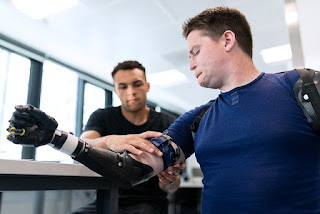Understanding Accessibility Barriers For Disabled People
While accessibility, in general, can relate to the degree to which a device or service or even environment is available for the customers, for disabled people it encompasses a much insightful meaning. There are five barriers to disabled people that deserve attention.
So, if one of your family members is struggling with any disability or you are looking for personal care in disability in NSW, this article will enlighten the barriers to accessibility and help you make an informed decision.
These barriers are attitudinal, organizational or systemic, architectural or physical, information or communications, and technology.
5 barriers to accessibility
1. Attitudinal barrier
Attitudinal barriers are assumptions, perceptions, and behaviors that distinguish people against disabilities.
Examples of attitudinal barriers:
Assuming a disabled person is inferior.
Assuming that a speech impaired cannot understand other people.
Stereotyping due to lack of knowledge.
Making a disabled person feel you are doing them a “special favor” by helping them.
This is how you can remove the attitudinal barrier:
Avoid making assumptions about someone’s disabilities and encourage them to speak about their condition.
Respect the privacy of disabled people.
Offer support of home modification for elderly and disabled NSW.
2. Organizational or Systemic barriers
Organizational or systemic barriers are the practices, procedures and policies, procedures that prevent people with disabilities from participating completely in social activities.
Examples of organizational barriers:
Having unclear objectives.
Expecting disabled people to express their understanding in only one way.
This is how you can remove organizational or systemic barriers:
Identify and express understanding in multiple ways.
Encourage disabled people to speak about accessibility issues in social activities.
3. Architectural or physical barrier
Architectural or physical barriers are elements of outdoor spaces that generate barriers to disabled people.
Examples of architectural or physical barriers include:
Sidewalks or doorways that are too narrow for a wheelchair.
Poor lighting makes it difficult to see for disabled people.
Door Knobs that are difficult to grasp.
This is how you can remove physical barriers:
Making lighting adjustments
Providing door knob gripper and handles
4. Information or communications barrier
Information or communications are those accessibility barriers that occur when sensory disabilities, such as learning, seeing, hearing, seeing are not considered. for both the sending and receiving of information.
Examples of communications barriers include:
Unclear language
Videos that are not captioned.
5. Technology barrier
Technology barriers are those when a technological platform is inaccessible to disabled people.
Examples of technology barriers include:
Electronic documents without accessibility features.
Handouts are available only in hard copies.


Comments
Post a Comment